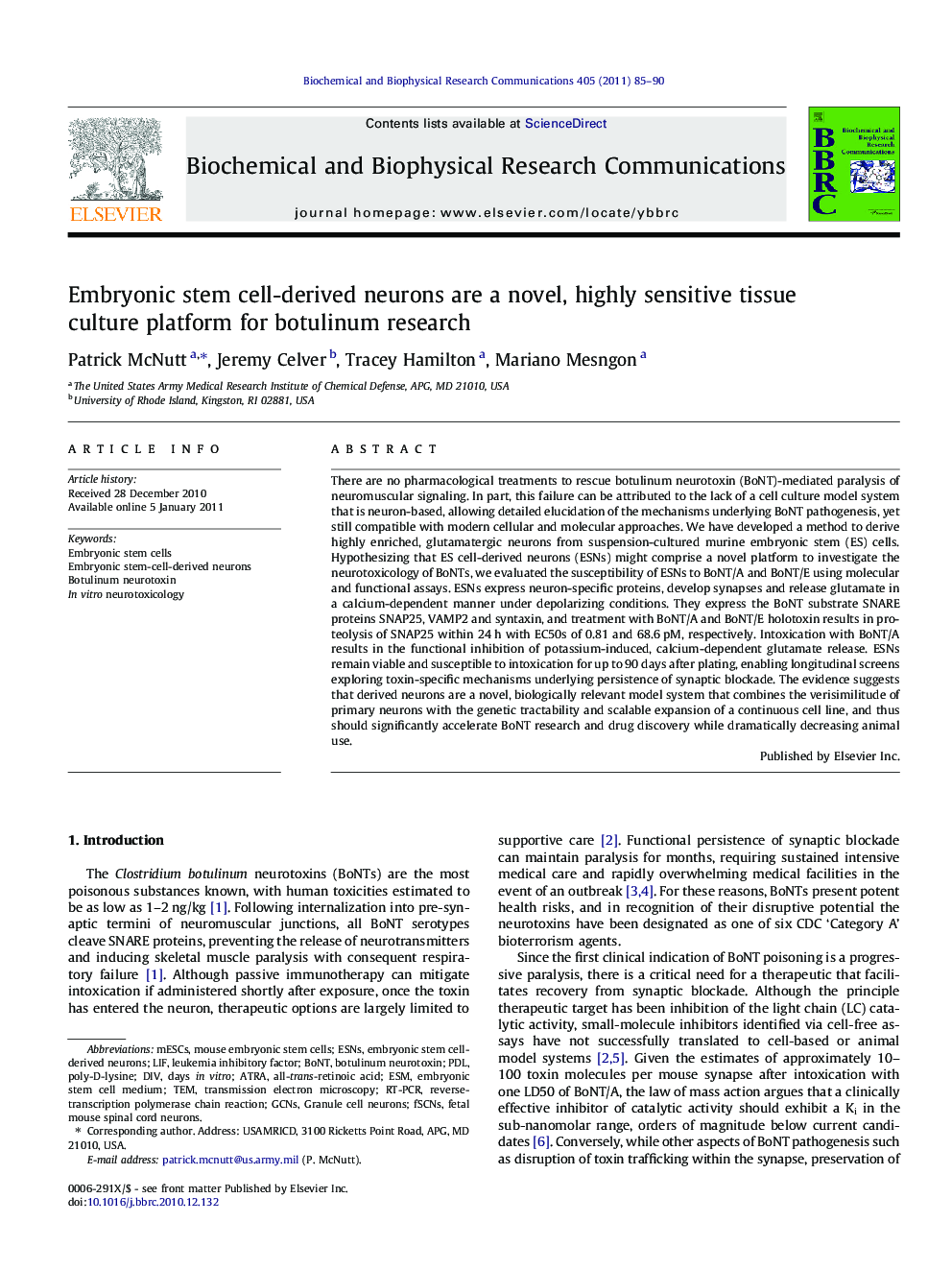| Article ID | Journal | Published Year | Pages | File Type |
|---|---|---|---|---|
| 1930614 | Biochemical and Biophysical Research Communications | 2011 | 6 Pages |
There are no pharmacological treatments to rescue botulinum neurotoxin (BoNT)-mediated paralysis of neuromuscular signaling. In part, this failure can be attributed to the lack of a cell culture model system that is neuron-based, allowing detailed elucidation of the mechanisms underlying BoNT pathogenesis, yet still compatible with modern cellular and molecular approaches. We have developed a method to derive highly enriched, glutamatergic neurons from suspension-cultured murine embryonic stem (ES) cells. Hypothesizing that ES cell-derived neurons (ESNs) might comprise a novel platform to investigate the neurotoxicology of BoNTs, we evaluated the susceptibility of ESNs to BoNT/A and BoNT/E using molecular and functional assays. ESNs express neuron-specific proteins, develop synapses and release glutamate in a calcium-dependent manner under depolarizing conditions. They express the BoNT substrate SNARE proteins SNAP25, VAMP2 and syntaxin, and treatment with BoNT/A and BoNT/E holotoxin results in proteolysis of SNAP25 within 24 h with EC50s of 0.81 and 68.6 pM, respectively. Intoxication with BoNT/A results in the functional inhibition of potassium-induced, calcium-dependent glutamate release. ESNs remain viable and susceptible to intoxication for up to 90 days after plating, enabling longitudinal screens exploring toxin-specific mechanisms underlying persistence of synaptic blockade. The evidence suggests that derived neurons are a novel, biologically relevant model system that combines the verisimilitude of primary neurons with the genetic tractability and scalable expansion of a continuous cell line, and thus should significantly accelerate BoNT research and drug discovery while dramatically decreasing animal use.
Research highlights► Developed a robust methodology to reproducibly generate large quantities of homogenous neurons from murine ES cells. ► Molecular and functional assays demonstrate that derived neurons are highly sensitive to BoNT/A and BoNT/E. ► This model offers an economic, biologically relevant cell-based model for BoNT research. ► Derived neurons are anticipated to accelerate BoNT basic research and drug discovery.
